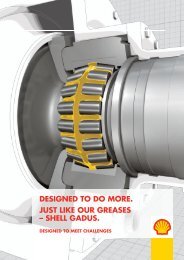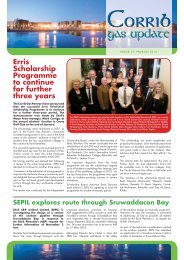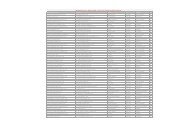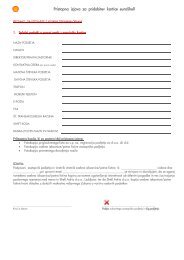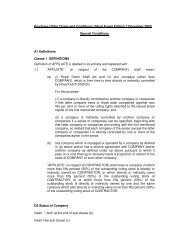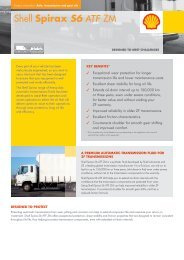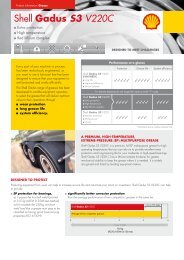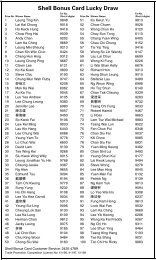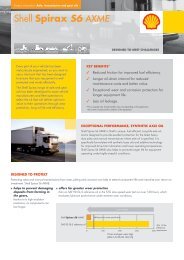OBEN GAS DEVELOPMENT PROJECT
OBEN GAS DEVELOPMENT PROJECT
OBEN GAS DEVELOPMENT PROJECT
You also want an ePaper? Increase the reach of your titles
YUMPU automatically turns print PDFs into web optimized ePapers that Google loves.
Appendixes<br />
acidified to a pH of 1.5 for heavy metal analysis and the others kept at 4 o C) and then transported to the<br />
laboratory for analyses.<br />
Water temperature was measured in situ using Radiometer, while transparency was determined with a<br />
Turbidimeter. Sample for dissolved oxygen (DO) was fixed in the field using 1.0 ml each of Winkler’s Solutions<br />
A and B (APHA, 1989).<br />
Samples for BOD5 determination were collected in black 250ml reagent bottles and taken to the laboratory for a<br />
five-day incubation, fixing and analysis.<br />
Hydrogen-ion concentration (pH) , conductivity, turbidity, salinity, and total dissolved solids were measured in<br />
situ using Radiometer (portable digital meters).<br />
Dissolved oxygen and BOD5 samples were analysed in the laboratory using the Winkler’s titrimetric method.<br />
i. Phytoplankton and Zooplankton<br />
Composite samples were taken quantitatively by filtering 100 litres of water through 55µm Hydrobios plankton<br />
net. All samples were preserved in 4% buffered formaldehyde in labeled polyethylene bottles and taken to the<br />
laboratory for analysis.<br />
ii. Benthic fauna<br />
The light dredge or Ekman grab was used in sampling benthic fauna. The grab samples were sieved at the<br />
station using 500µm sieve and preserved using 4% buffered formaldehyde. The labeled samples were taken to<br />
the laboratory for analysis.<br />
Hydrogeology and hydrology<br />
A total of five (5) environmental boreholes were investigated but samples were collected from three existing<br />
boreholes for in-situ measurements. The water bearing rocks (aquifer) are generally shallow and the static<br />
water levels in the area range between 13.21m-14.53m. The subsurface materials consist of topsoils which are<br />
brownish in colour and predominantly silty sands followed by sands of different grain sizes and shapes.<br />
Groundwater Sampling<br />
The modified HACH groundwater sampler was used to collect samples after flushing the holes. In- situ<br />
measurements for pH, temperature, conductivity, salinity, TDS and Turbidity were conducted for these<br />
samples.<br />
The insitu measurements were taken with the aid of Turbidimeter and Radiometer respectively for Turbidity,<br />
TDS, DO, pH ,Salinity and Electrical Conductivity. Here data were collected by filling water sample into a<br />
sample cell and the equipment’s nob was press to boot on. The sample cell with water sample was inserted<br />
into the equipment and the READ command prompted for data analysis.<br />
Groundwater Flow Direction<br />
The direction of groundwater flow in the project was determined using the three existing environmental<br />
boreholes. The boreholes were located in a triangular manner and the static level was measured in each with<br />
Fisher Model WLT electric water level indicator.<br />
A-7






